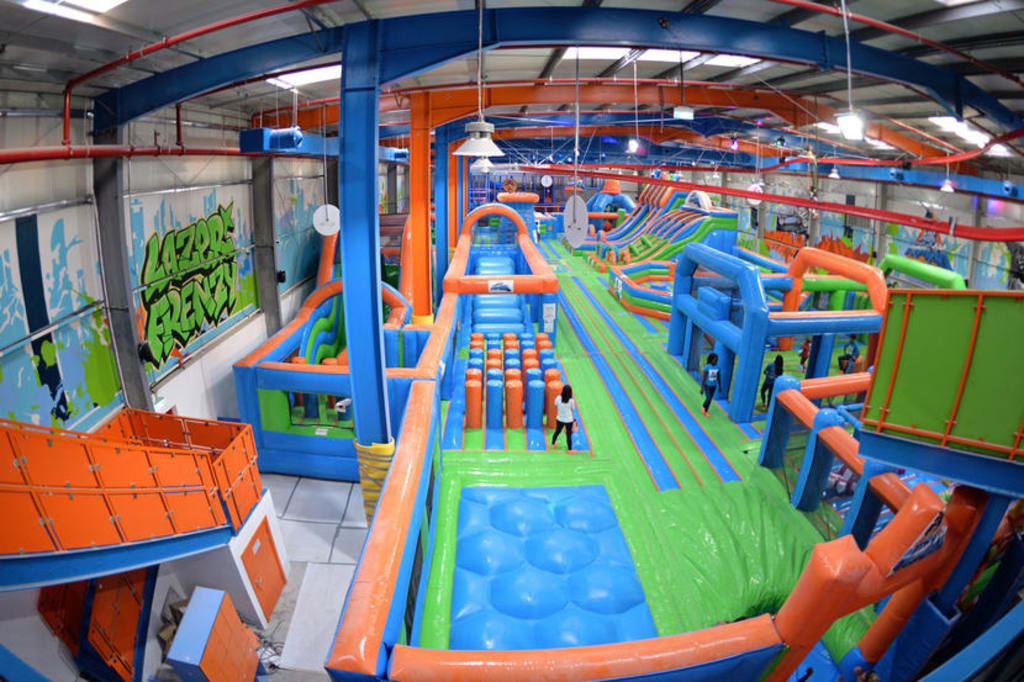Summer time for kids with disabilities
what can I do these summer?

Spending quality time with your kids during the summer is a wonderful idea. When planning activities for children with autism, it's important to consider their individual interests, strengths, and sensitivities. Here are some suggestions for summer activities:
Outdoor Exploration: Visit parks, nature reserves, or botanical gardens. Engage in nature walks, birdwatching, or picnics. Outdoor activities provide sensory stimulation and opportunities for learning and exploration.
Sensory Play: Set up sensory stations at home or in the backyard. Use sand, water, bubbles, or tactile materials like Play-Doh or kinetic sand. These activities can help with sensory integration and provide calming or stimulating experiences.
Swimming: Many children with autism enjoy swimming. It can provide a calming and therapeutic effect. Check if your local community centers or pools offer inclusive swimming sessions or adaptive swim programs.
Art and Crafts: Engage in arts and crafts activities that suit your child's interests. Painting, drawing, collage making, or sculpting with clay can be enjoyable and help develop fine motor skills and creativity.
Cooking and Baking: Involve your children in simple cooking or baking activities. They can help measure ingredients, mix, and decorate. It's a great opportunity to work on following instructions and promoting independence.
Visit Libraries or Bookstores: Explore the library or bookstore together. Choose books that align with your child's interests. Reading can be a calming activity and foster language development and imagination.
Music and Dance: Introduce your children to music or dance classes tailored for kids with autism. Alternatively, have dance parties or sing-alongs at home. Music and rhythm can promote self-expression and social interaction.
Specialized Summer Camps: Look for summer camps or programs specifically designed for children with autism. These camps often provide a supportive environment with trained staff and activities catered to their needs.
Social Skills Groups: Consider enrolling your child in social skills groups or therapy programs that focus on developing social interaction, communication, and cooperation with peers.
Visit Specialized Playgrounds: Look for inclusive playgrounds or sensory-friendly play areas that offer equipment and spaces designed to accommodate children with autism. These spaces provide opportunities for socialization and physical activity.
Remember to prioritize your child's comfort and well-being. It's essential to create a structured and predictable environment, gradually introduce new activities, and provide breaks as needed. Consulting with professionals, such as occupational therapists or behavior analysts, can also offer valuable guidance for creating an enriching summer experience for your kids with autism.
Certainly! Here are some indoor activities you can do at home with your child with autism:
Sensory Bins: Create sensory bins using materials like rice, beans, water beads, or shredded paper. Add small toys or objects for your child to explore and manipulate. This activity provides tactile stimulation and can help with sensory integration.
Building Blocks: Engage in building activities with blocks, Legos, or magnetic tiles. Encourage your child to build structures or engage in imaginative play. Building activities promote fine motor skills, spatial awareness, and creativity.
Puzzles: Work on age-appropriate puzzles together. Start with simpler puzzles and gradually increase the difficulty level. Puzzles can enhance problem-solving skills, cognitive abilities, and hand-eye coordination.
Arts and Crafts: Set up an art station with various materials like crayons, markers, colored pencils, and paper. Encourage your child to draw, color, or engage in simple craft projects. Artistic activities can promote self-expression and fine motor skills.
Sensory Bottles: Create sensory bottles using clear plastic bottles filled with water, glitter, beads, or other materials. Securely seal the bottles and let your child observe and manipulate them. Sensory bottles can be soothing and visually stimulating.
Indoor Obstacle Course: Set up an indoor obstacle course using pillows, cushions, and other safe household objects. Create a series of challenges for your child to navigate through. This activity promotes gross motor skills, coordination, and body awareness.
Cooking and Baking: Involve your child in age-appropriate cooking or baking activities. Let them help with measuring ingredients, stirring, or decorating. Cooking activities encourage following instructions, fine motor skills, and practical life skills.
Reading and Storytelling: Spend time reading books together or create your own stories. Use visual aids or props to make storytelling more engaging. Reading activities enhance language development, imagination, and comprehension skills.
Virtual Field Trips: Take advantage of virtual tours or online resources to explore museums, zoos, or other interesting places from the comfort of your home. Many organizations offer virtual experiences that can be educational and entertaining.
Sensory Playdough: Make homemade playdough using flour, salt, water, and food coloring. Add scents or textures to make it more engaging. Playing with playdough provides tactile and sensory input, supporting fine motor skills and creativity.
Remember to consider your child's specific interests and sensitivities when planning indoor activities. Adapt the activities to their preferences and gradually introduce new experiences. By creating a structured and supportive environment, you can provide engaging and beneficial indoor activities for your child with autism.
About the Creator
Arlene Terencio
Im Arlene, I leave in UAE. I'm ABA Therapist, Teaching assistant, Inclusion learning support assistant, SEN Teacher, Nurse by Profession and Psychologist. I like reading books, watching movies. I love to travel in different countries
Enjoyed the story? Support the Creator.
Subscribe for free to receive all their stories in your feed. You could also pledge your support or give them a one-off tip, letting them know you appreciate their work.






Comments
There are no comments for this story
Be the first to respond and start the conversation.